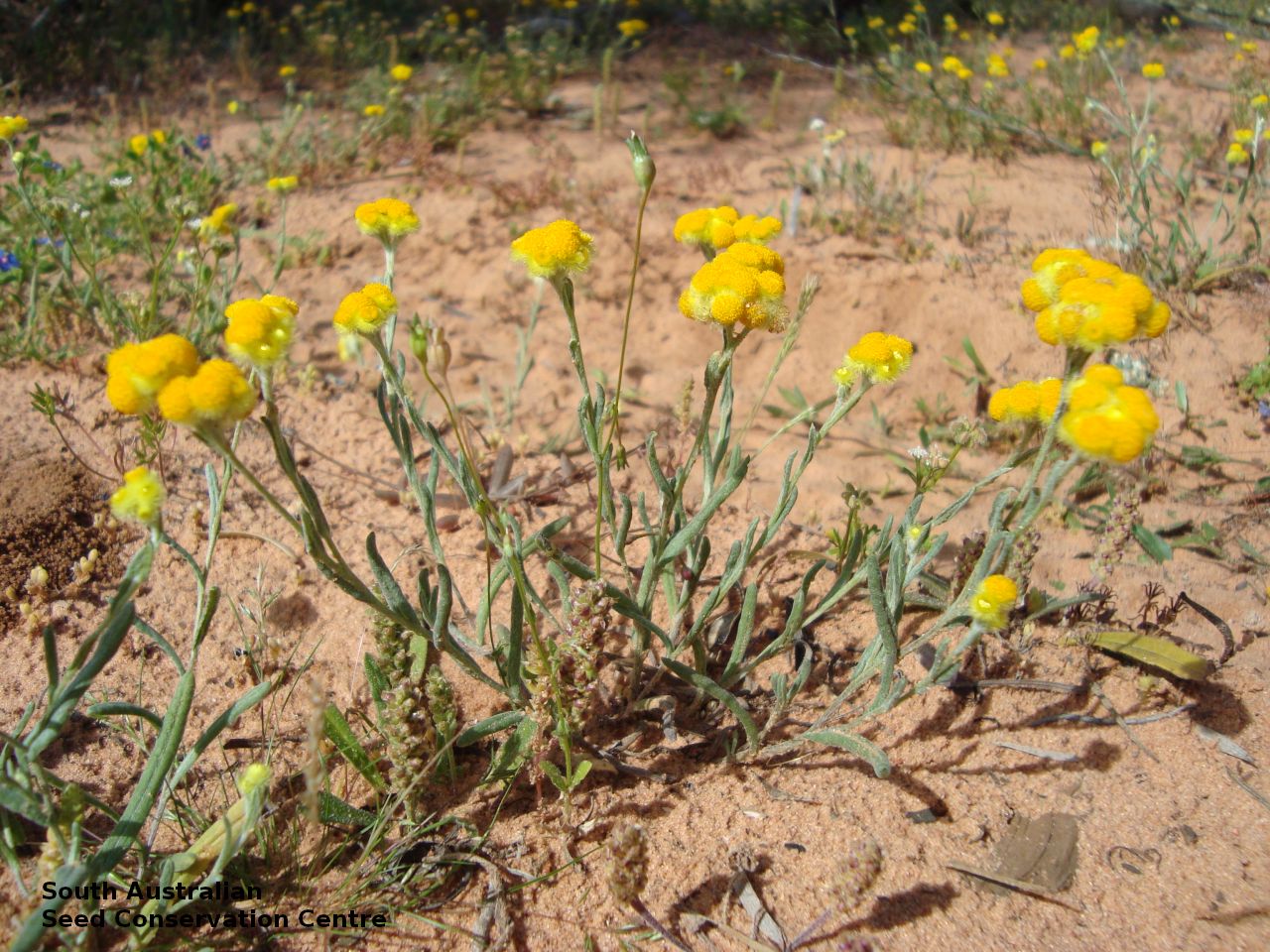
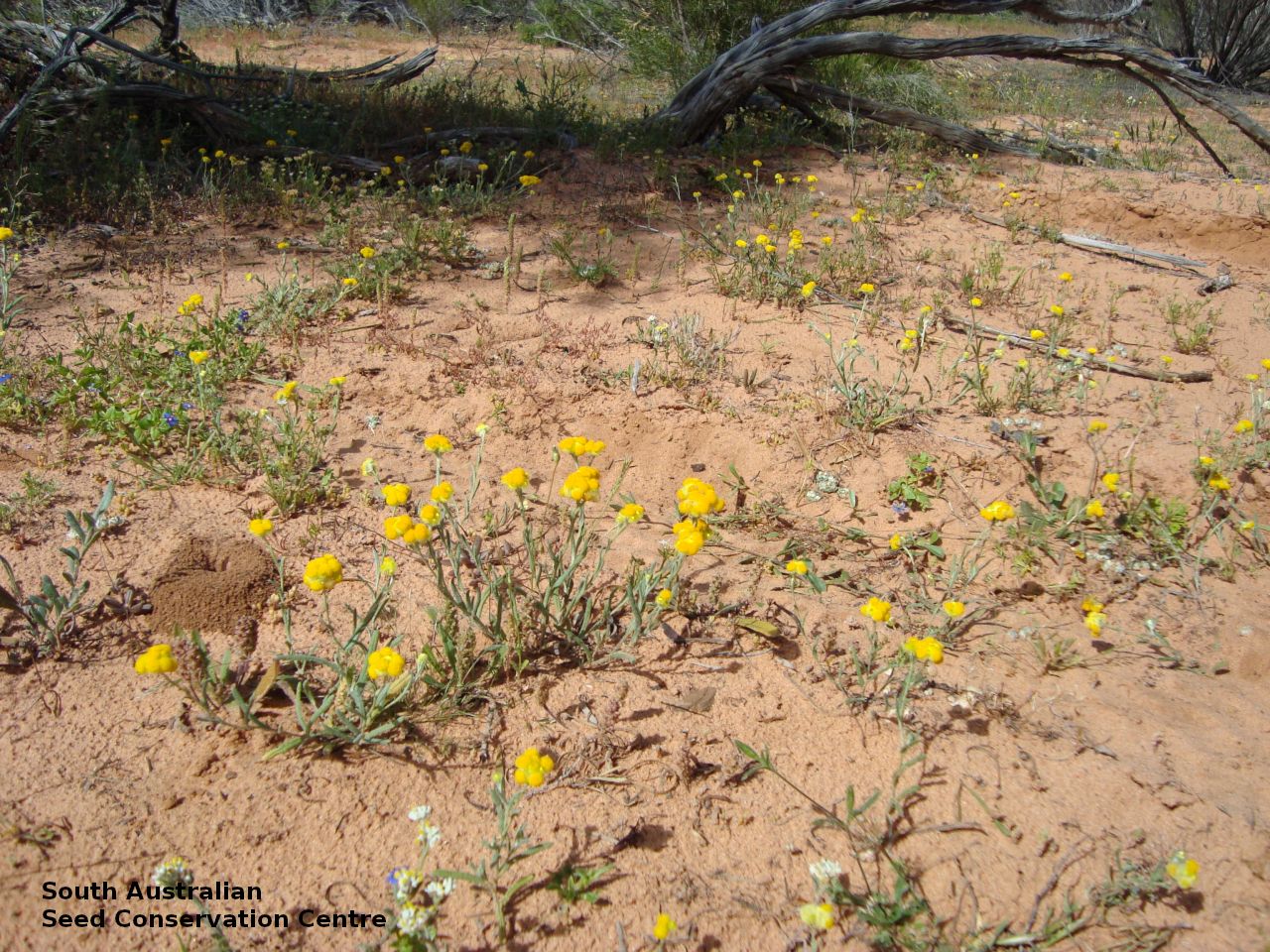
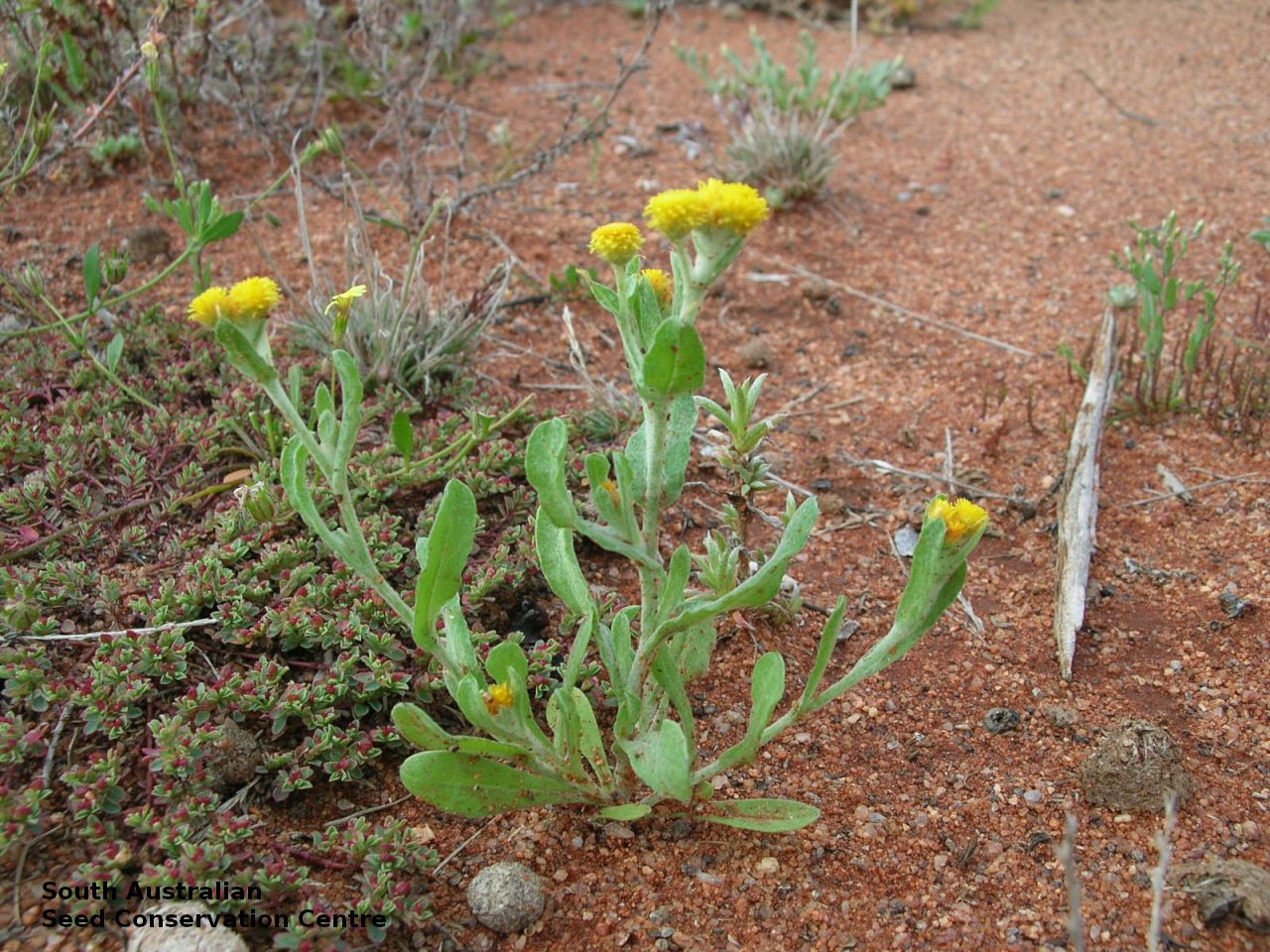
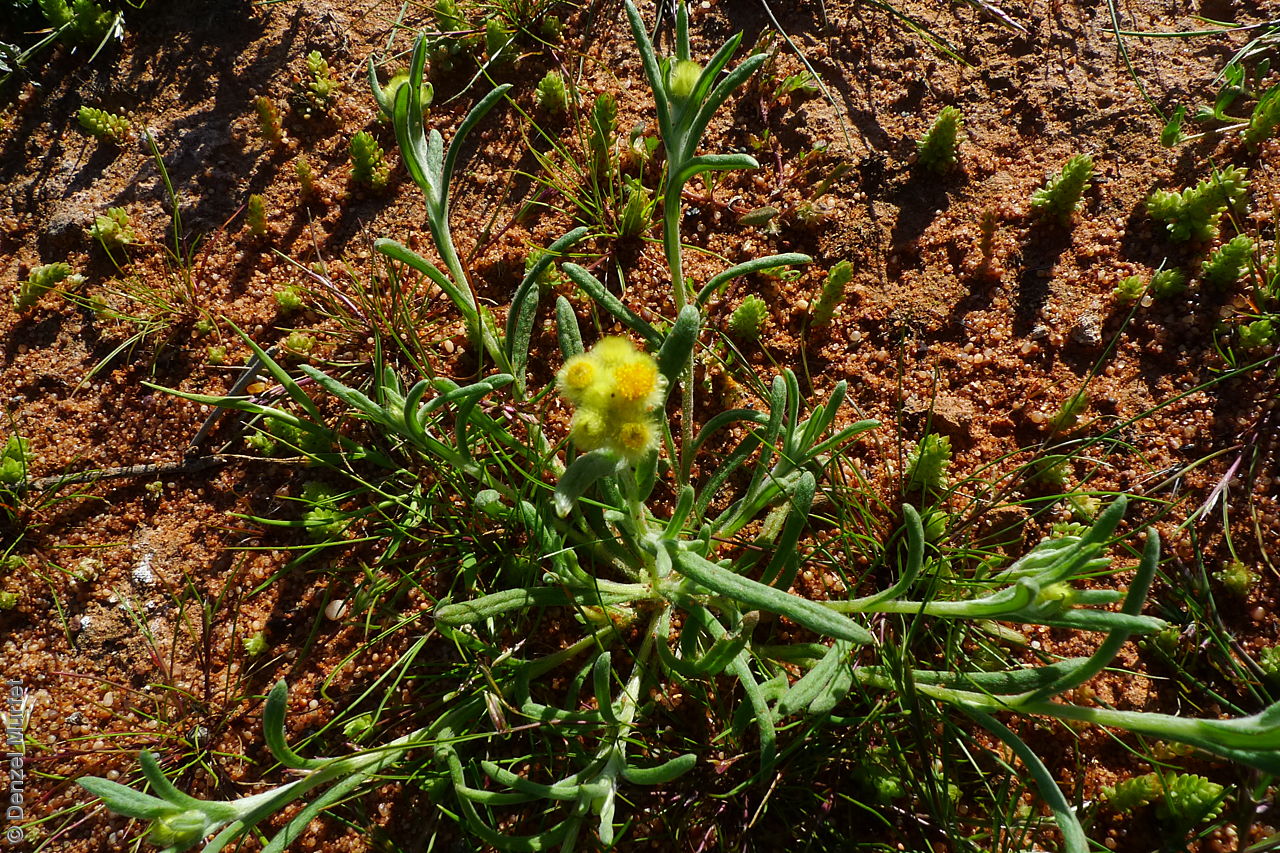
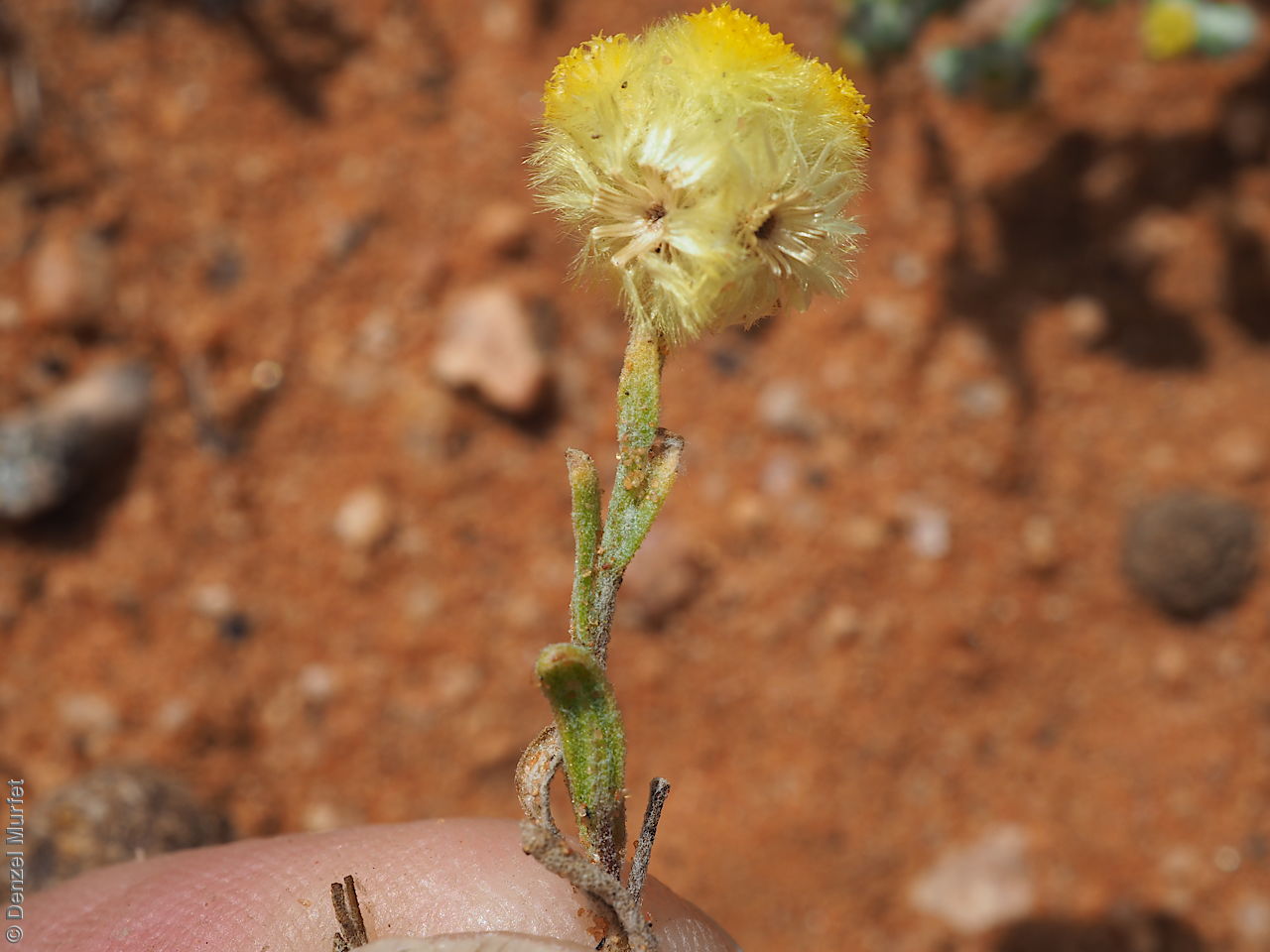
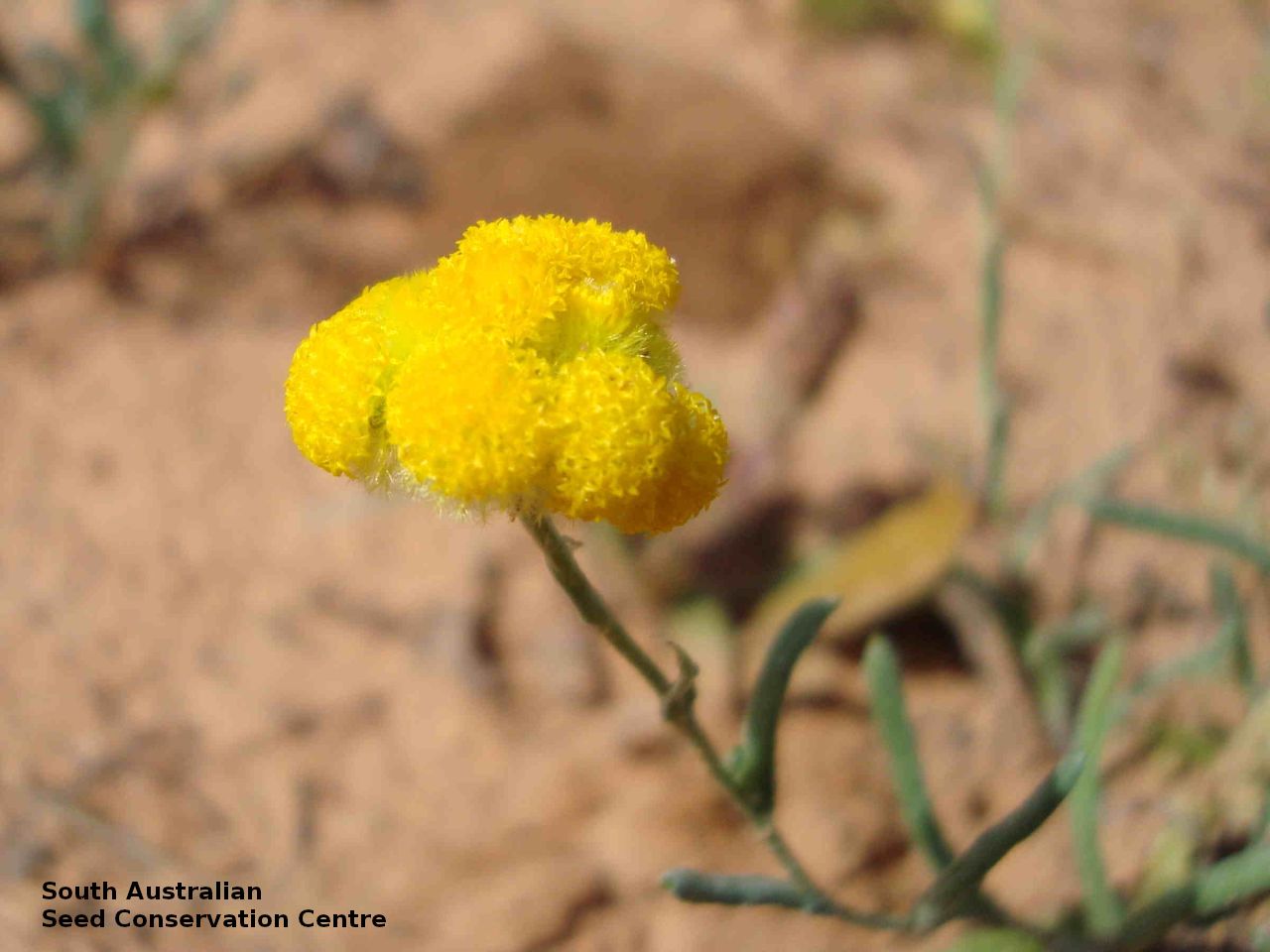
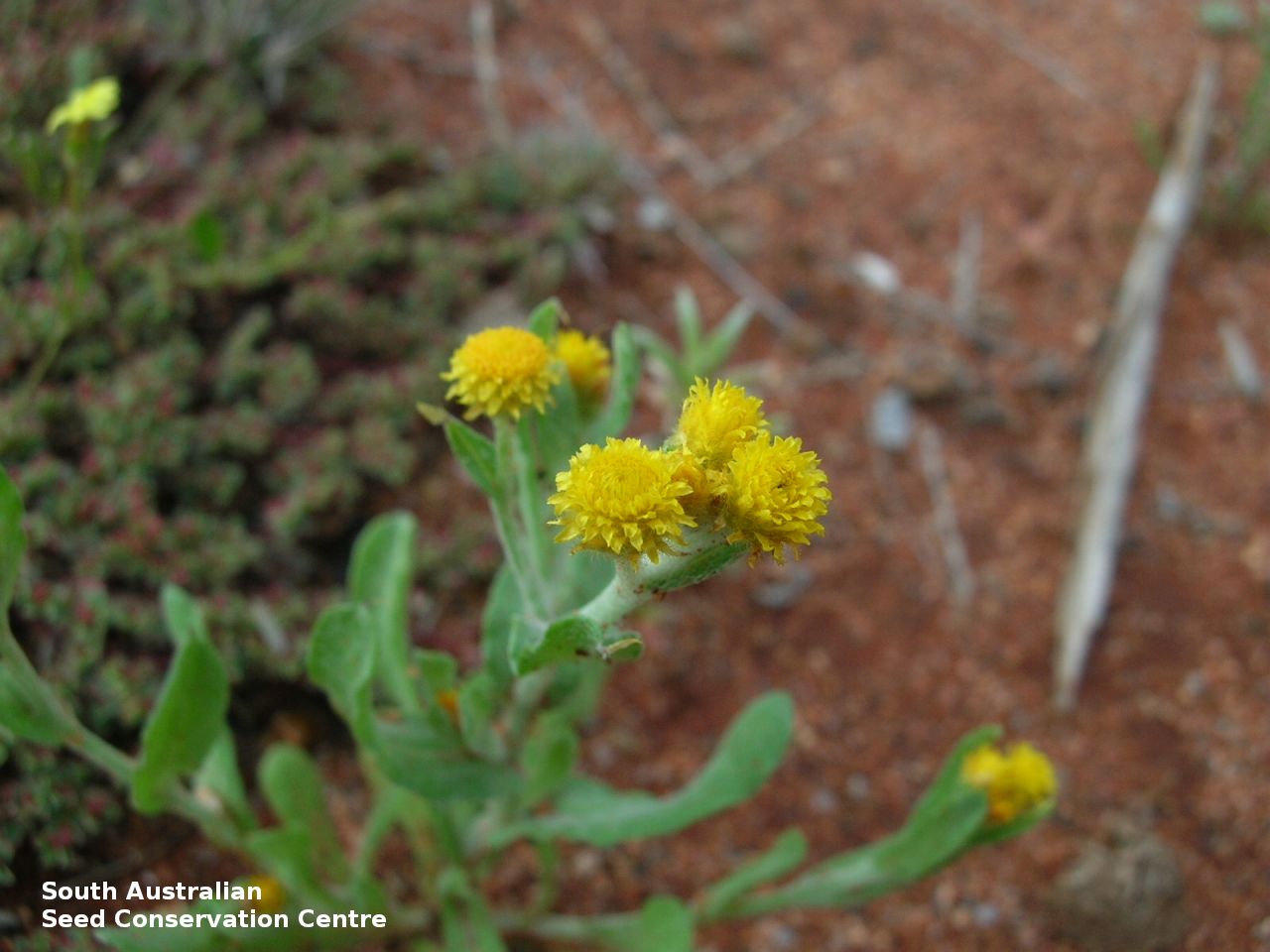
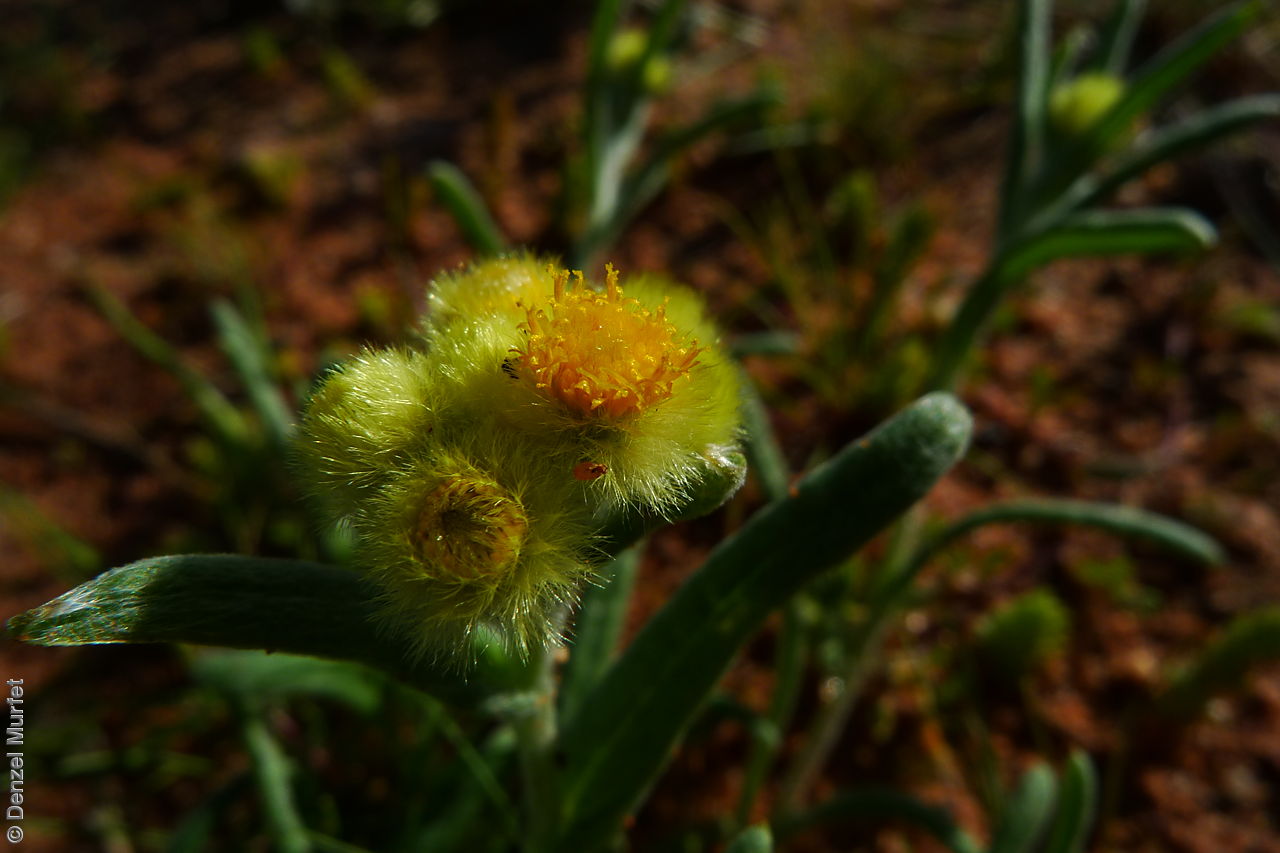
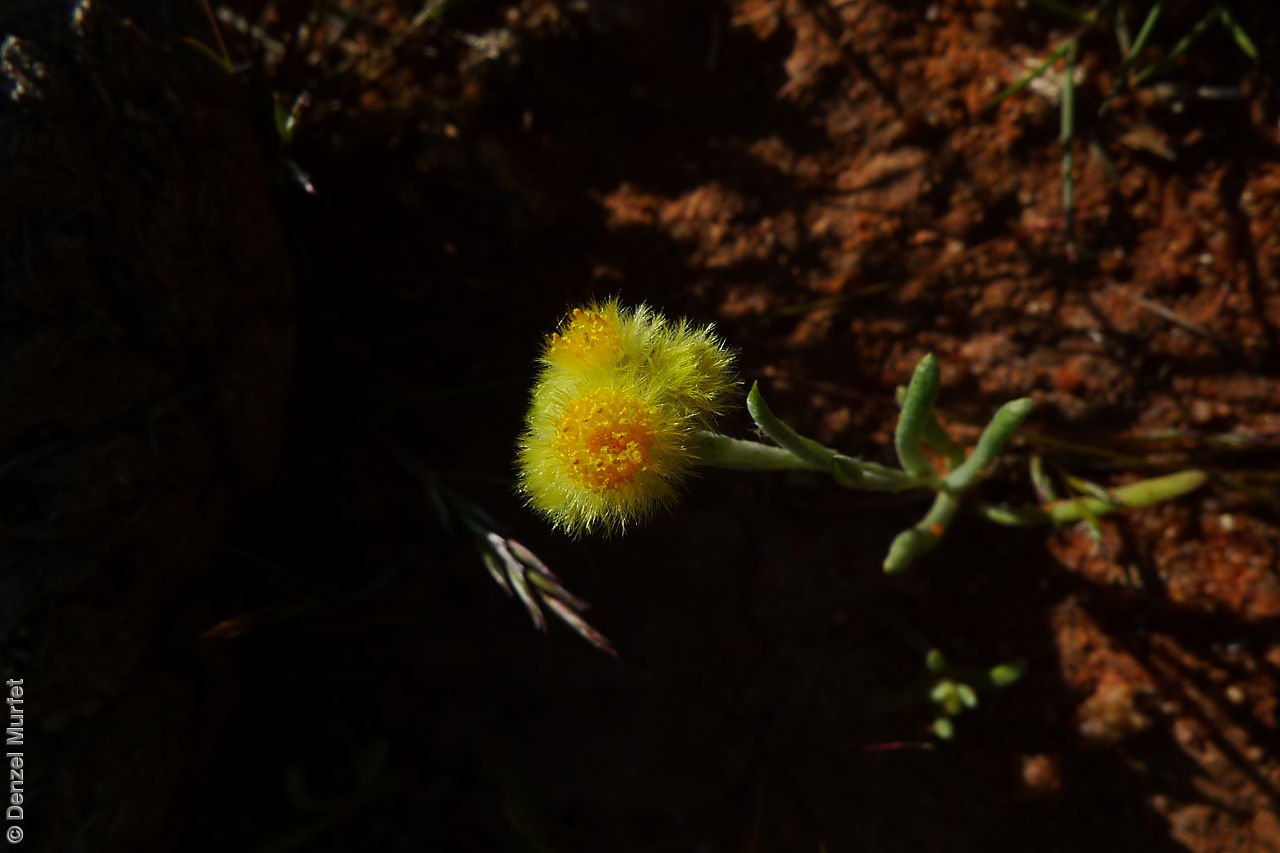
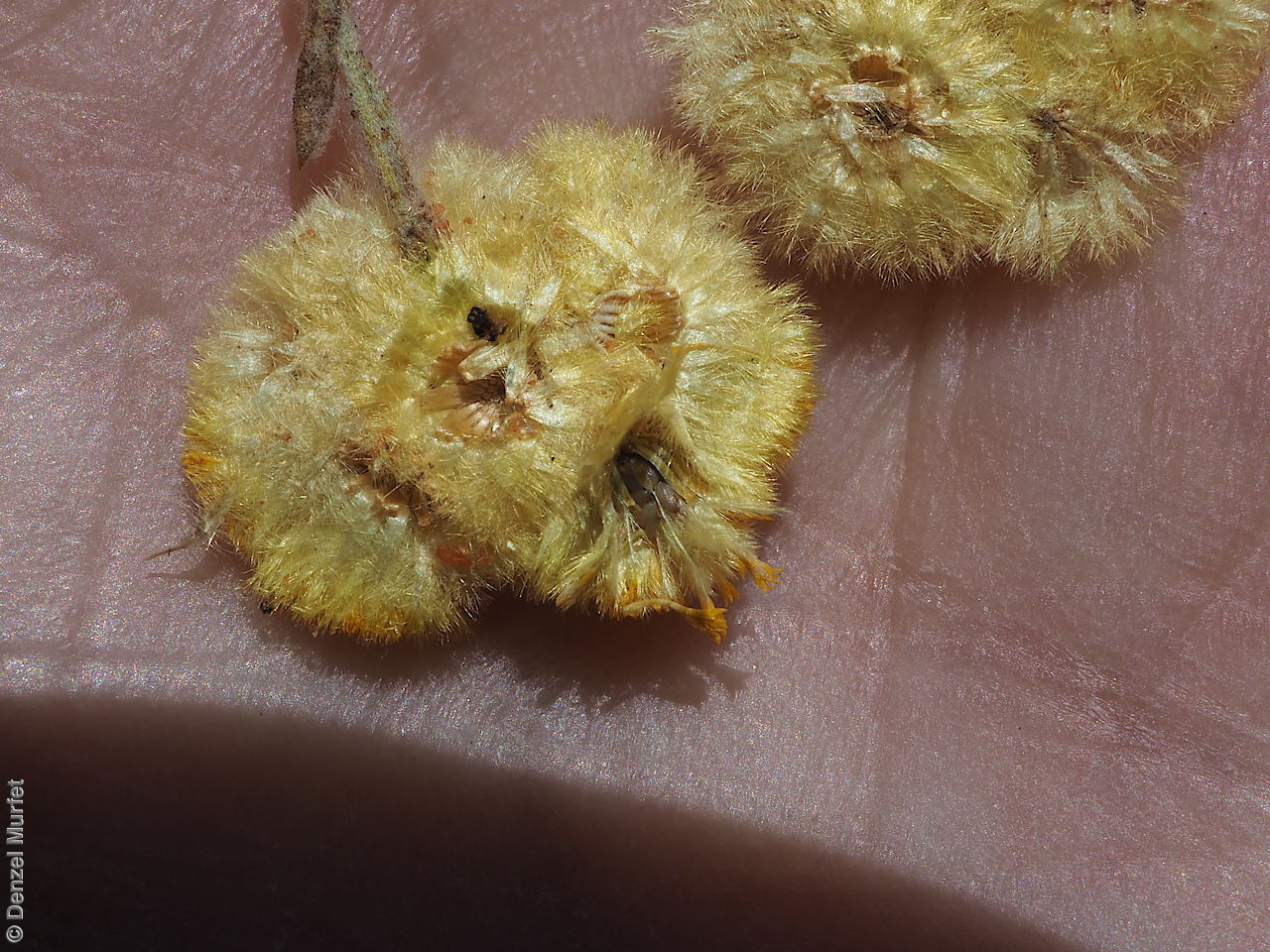
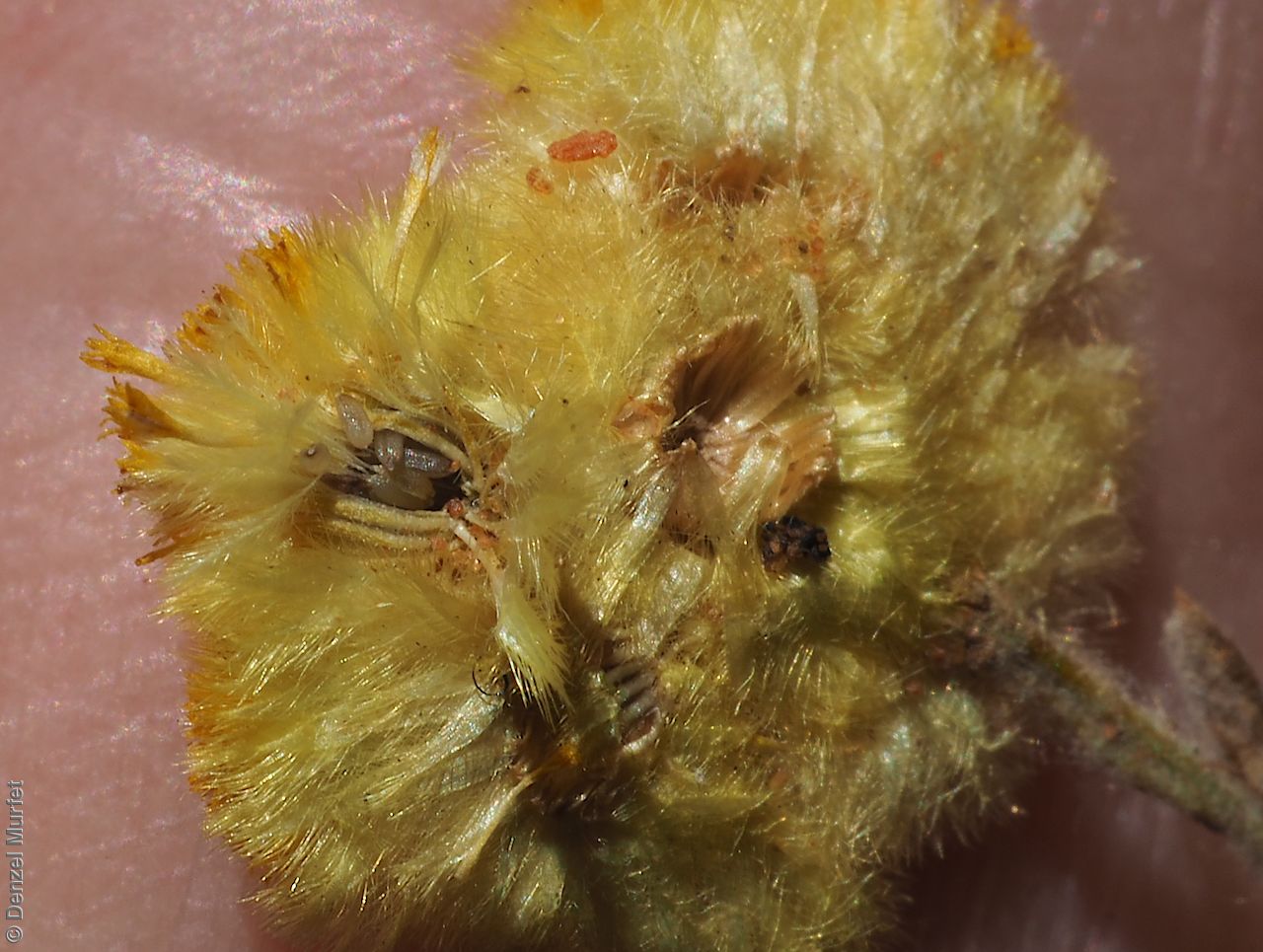
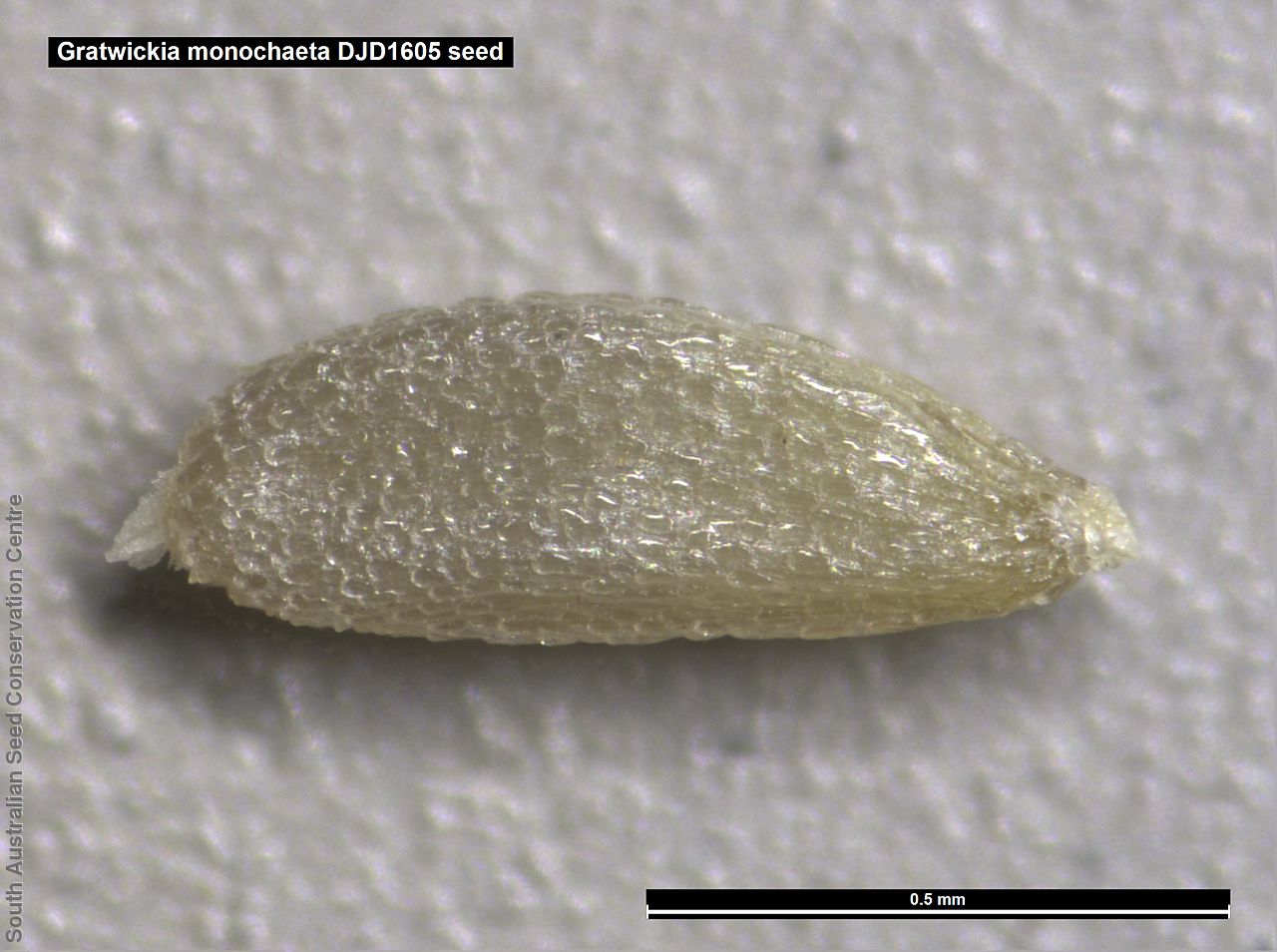
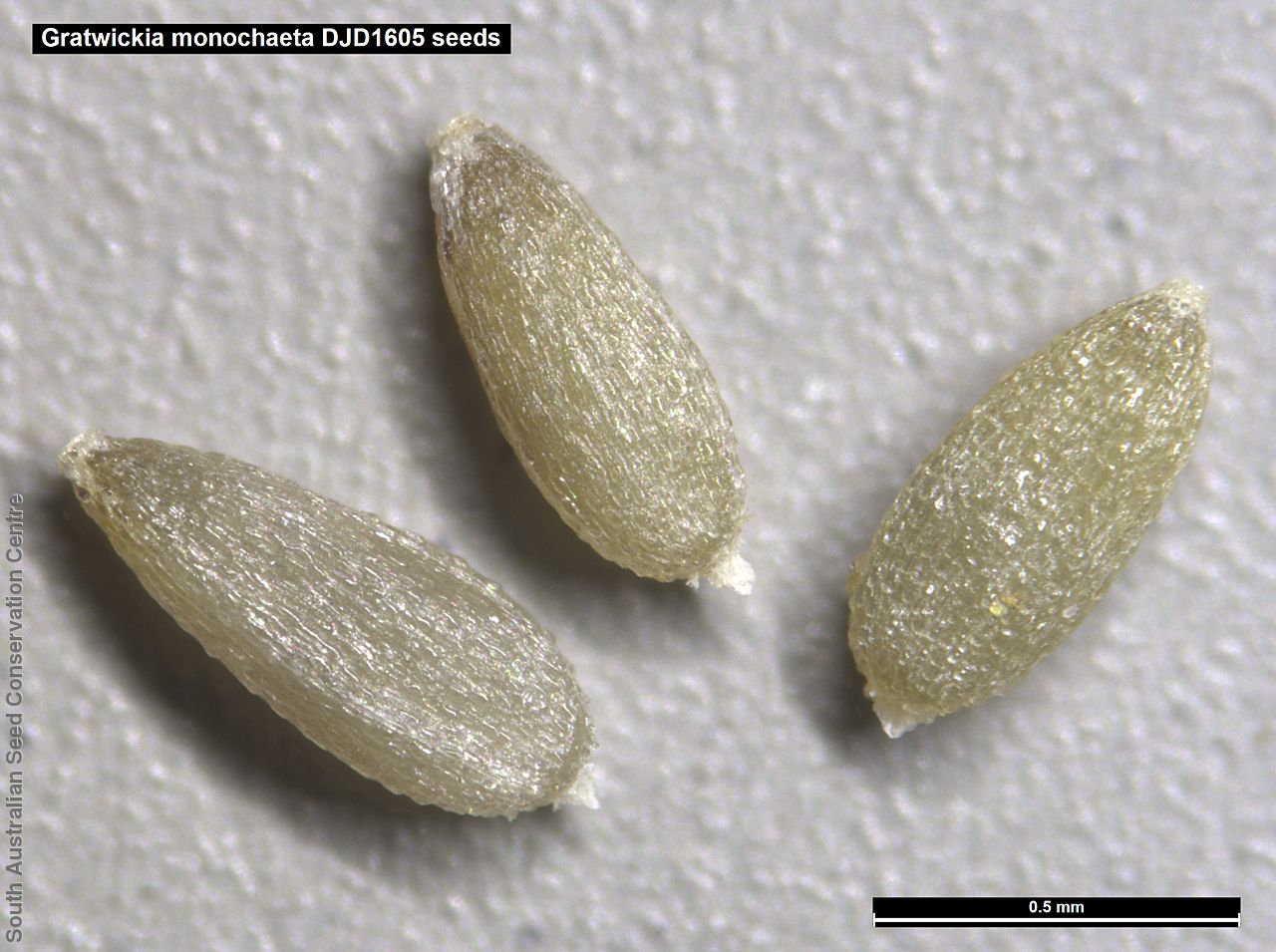
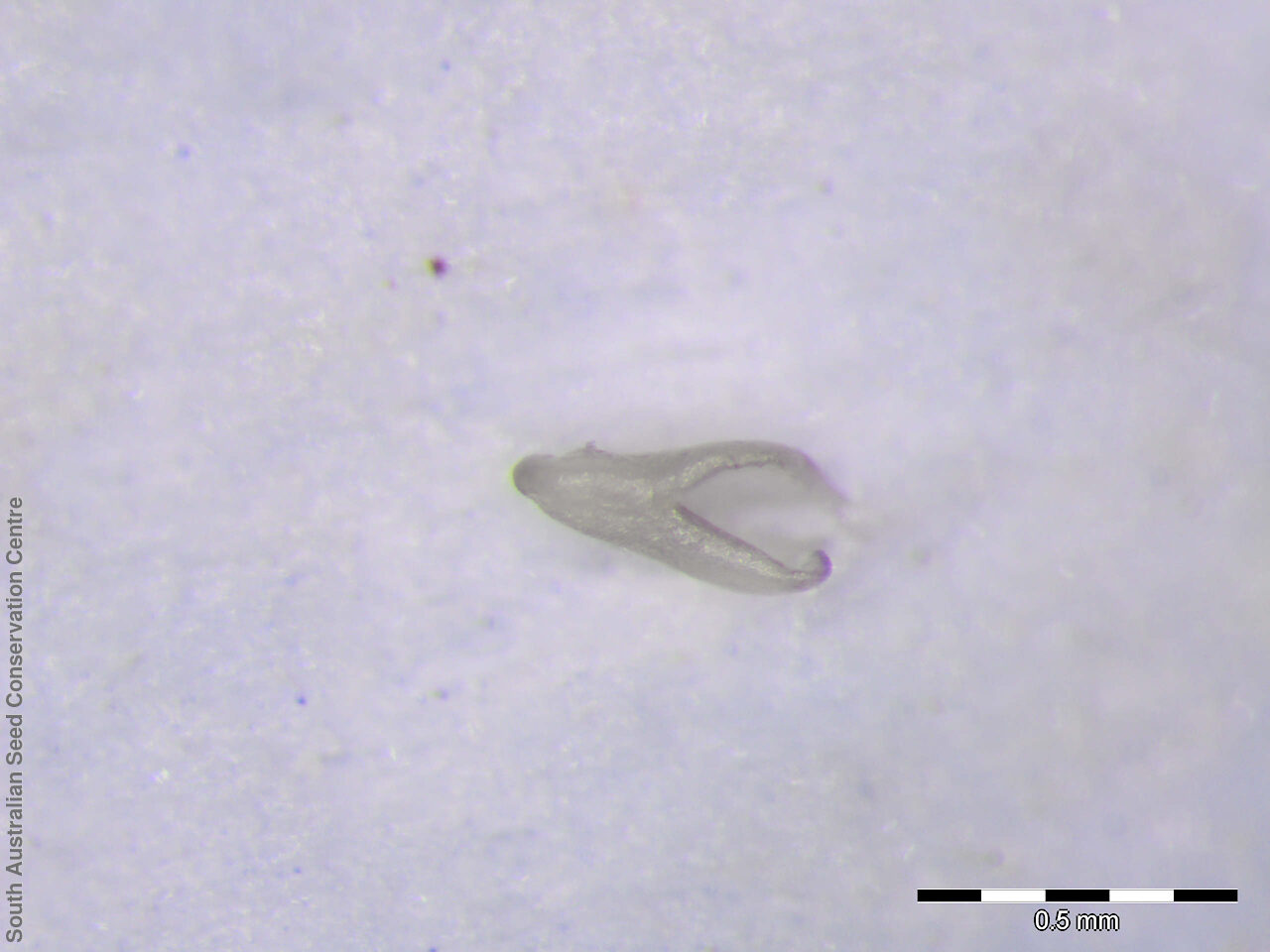
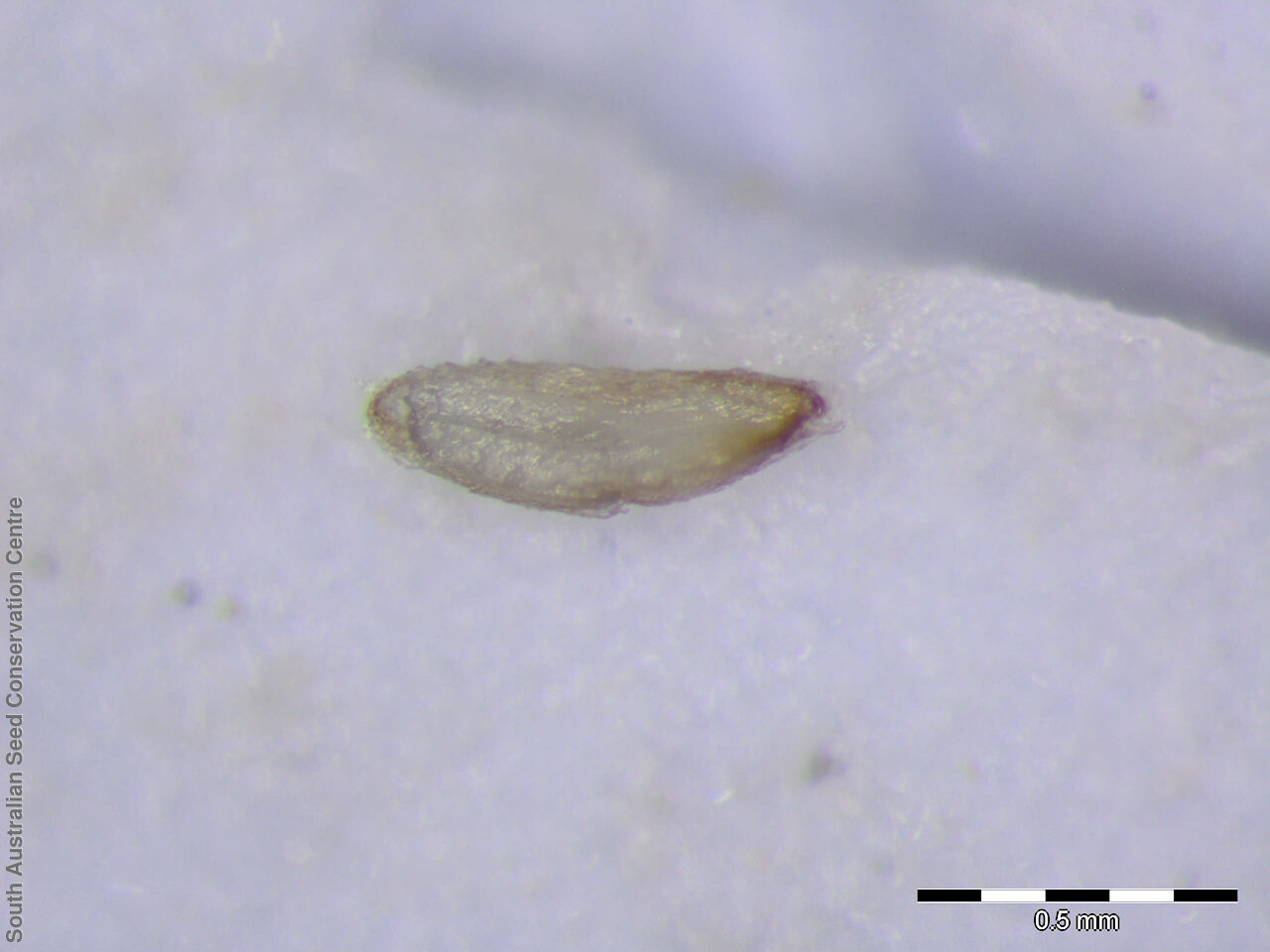

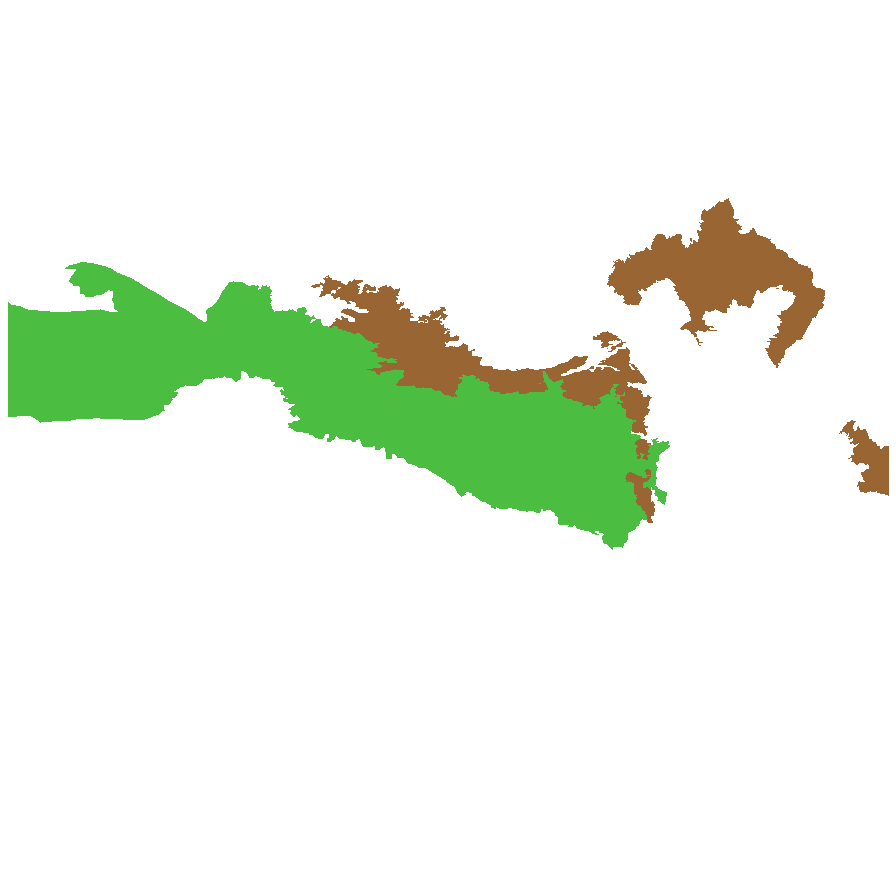
Botanical art
Prior names
Helichrysum monochaetum
Helichrysum mellorianum
Etymology
Gratwickia named after W.H Gratwick. Monochaeta from the Greek 'mono' meaning single and 'chaite' meaning bristle. referring to the single pappus bristle on the achenes.
Distribution and status
Endemic to South Australia and found in the central part and on Eyre Peninsula growing on various sites but usually in sand. Native. Rare in South Australia.
Herbarium regions: Lake Eyre, Nullarbor, Gairdner-Torrens, Eastern, Eyre Peninsula
NRM regions: Alinytjara Wilurara, Eyre Peninsula, South Australian Arid Lands
AVH map: SA distribution map (external link)
Plant description
Sparsely to much-branched annual herbs to 18 cm tall and to 10 cm diameter, with several ascending stems; stems and branches sometimes purple-tinged, with moderately dense woolly hairs and sessile glandular hairs, becoming less dense with age. Leaves narrowly oblanceolate, almost linear, with recurved margins, to 30 mm long and 2 mm broad; covered in woolly hairs, more dense on the underside. Flower-heads several in tight clusters terminating the stems and branches with bright golden-yellow flowers. Flowering between August and October. Fruits are brown daisy head. Seeds are light brown ovoid seed to 0.8 mm long and 0.4 mm wide, with a single pappus bristle. Seed embryo type is spatulate fully developed.
Seed collection and propagation
Collect seeds between October and December. Collect whole heads that are drying off and turning golden brown or collect just the seeds by plucking it off with your fingers. Mature seeds are easily removed. Place the heads in a tray for a week to dry. Then pluck the seeds from the head with your finders. Viable seeds will be fat and brown. Store the seeds with a desiccant such as dried silica beads or dry rice, in an air tight container in a cool and dry place. From one collection, the seed viability was high, at 100%. Seeds are non-dormant, viable seed should germinate readily.
| Location | No. of seeds (weight grams) | Number of plants | Date collected | Collection number Collection location | Date stored | % Viability | Storage temperature |
|---|---|---|---|---|---|---|---|
| BGA MSB | 21,000 (1.01 g) 21,000 (1.01 g) | 100 | 2-Nov-2009 | DJD1605 Eyre Peninsula | 1-Jun-2010 | 100% | +5°C, -18°C |
Number of plants: This is the number of plants from which the seeds were collected.
Collection location: The Herbarium of South Australia's region name.
% Viability: Percentage of filled healthy seeds determined by a cut test or x-ray.